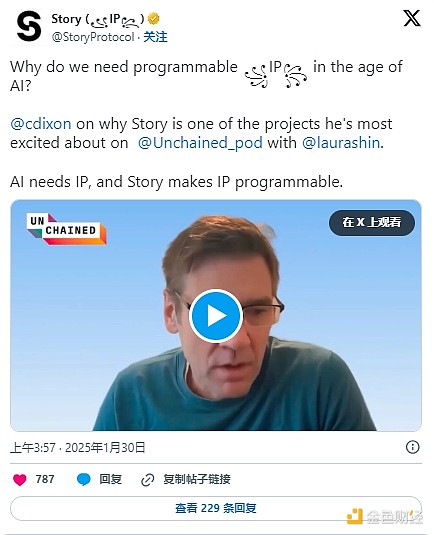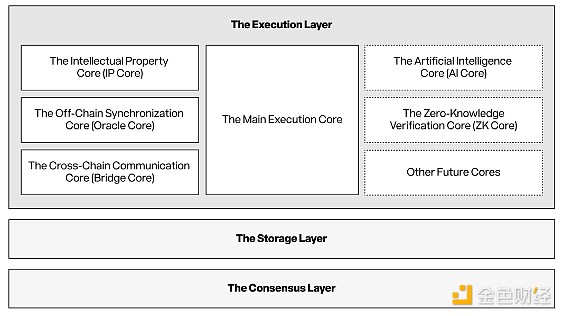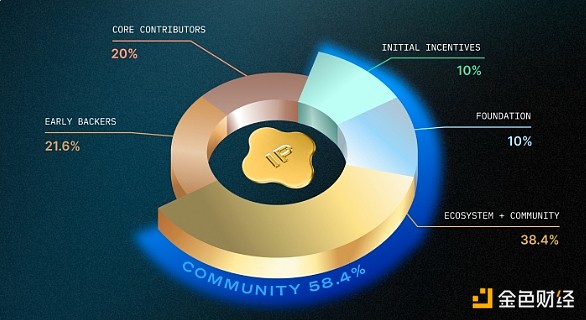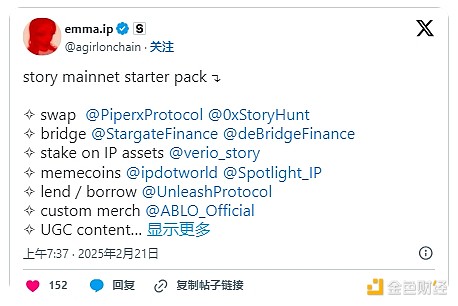Bankless: What has Story Protocol built

Reprinted from jinse
02/26/2025·2MAuthor: David C, Bankless; Translated by: Deng Tong, Golden Finance
Apart from a completely license-free financial system, a compelling vision of cryptocurrencies has been building the next generation of the internet, especially for creatives.
Through infrastructure such as NFT, cryptocurrencies provide artists and creators with new ways to establish ownership of digital intellectual property (IP), allowing them to monetize or reformat their works in a more lasting, transparent medium. While these innovations represent steps in the right direction, they are still rough and simple, providing only new ways to earn or store digital works, but failing to solve deeper structural problems.
The rise of artificial intelligence has exacerbated these challenges. Artificial intelligence accelerates content production at an astonishing speed, often using unauthorized data to train and generate works with unknown ownership. What we need is an infrastructure that moves at the speed of the internet, allowing creators to establish ownership, define licensing terms and distribute royalties seamlessly.

Story Protocol proposes a blockchain solution. Their approach creates a new system for Internet-based IP that combines a registry for tracking ownership with a set of modules designed to facilitate licensing, effectively transforming IP into programmable asset classes. By embedding ownership and licensing directly into smart contracts, Story Protocol Story Protocol enables creators and their collaborators (human or artificial intelligence) to share, license and scale work with minimal friction, bypassing clumsy, inefficient existing systems.
In this article, we will learn how Story responds to this challenge, examining the level of innovation in its technical architecture to understand the feasibility of its goals.
Story structure
Story Protocol is essentially an EVM-based blockchain, consisting of three layers, enabling creators to register IPs, execute licenses, and manage royalties on the chain.
This structure supports a dynamic IP lifecycle, from initial registration to creation of derived content. Its design is defined by two main categories: the execution layer that runs smart contracts and a set of infrastructure layers that handle data storage, consensus, and network security.

Execution layer
The execution layer is the operation center of Story Protocol, consisting of four "cores" that jointly handle transactions, execute licensing rules, and support new features of digital IP.
-
The main core is the EVM-compatible environment of the chain, which can execute smart contracts and transactions.
-
IP Core manages the entire life cycle of digital intellectual property on Story, building all processes from registration to licensing and royalty allocation. Its basis is the Proof of Creativity (PoC) protocol, which establishes ownership by registering each creative work as an IPAsset, a programmable token stored on the chain and managed by IPAccount, a dedicated Smart contracts, executable license permissions, royalty payments and derivative authoring guides—Ensure consistency and verifiability of source records. On this basis, Story Protocol integrates a set of IP operation modules to automate licensing, revenue sharing and dispute resolution.

-
The off-chain synchronization core provides authentication and legal compliance required to integrate on-chain IP into a traditional IP framework based on the execution framework.
-
Finally, the Cross-chain Communications Core is designed to enable creators of IPAssets to leverage the advantages of different blockchain ecosystems to ensure that their IPs can be licensed, traded, or monetized outside the Story Protocol network.
Infrastructure layer
Outside the execution layer, there are two other layers that help maintain data storage, verification and consensus on the IP network.
-
Storage Layer: In order to store digital IP without dragging down the network, Story stores key elements of the asset. The agreement retains the asset's critical metadata (such as ownership records and licensing terms) on the chain for persistence and verifiability, while offloading the media file itself to a decentralized network (such as IPFS or Arweave) to Reduce congestion and costs.
-
Consensus layer: The last layer is Story's CometBFT consensus mechanism - Cosmos Cosmos uses the same consensus mechanism, which allows it to trust proven systems and smooth interoperability across other chains. CometBFT’s powerful Byzantine fault tolerance ensures network security, providing near-instant ending even if up to one-third of validators act maliciously or offline – an important feature in ensuring reliable IP ownership and license transactions. Story also uses a Proof of Stake (PoS) model where validators pledge $IP tokens to protect the network—Honest behavior can receive stake rewards while preventing fraudulent IP registrations.
-
$IP Token: In addition to staking, $IP also acts as a governance and gas token for the network, which is equipped with a deflation mechanism because every transaction is burned (this is a good thing). The initial supply is 1 billion tokens, and 25% of the $IP is unlocked at release, as shown in the figure below.

Opening up new paths
To address the fundamental problem of digital intellectual property, Story appears in refreshing ways, showing how intellectual property looks online and how blockchain can help modernize asset classes.
By anchoring ownership in smart contracts, integrating dedicated modules for licensing, royalties and dispute resolution, and building data through an on- chain/off-chain approach, it introduces an alternative intellectual property system that provides tracking its origins and the evolutionary approach, while keeping up with the rapid development of content creation and collaboration in the era of artificial intelligence. However, like any blockchain-based solution, Story Protocol currently lacks the power to take legal action on copyright infringement in traditional courts, nor can it automatically track royalties outside its own chain, thus relying on a somewhat idyllic success paradigm.
Despite these barriers, Story proves to be a compelling case of how blockchain can be used to transform existing law enforcement frameworks that are only ported to our online environment without proper updates.




 panewslab
panewslab